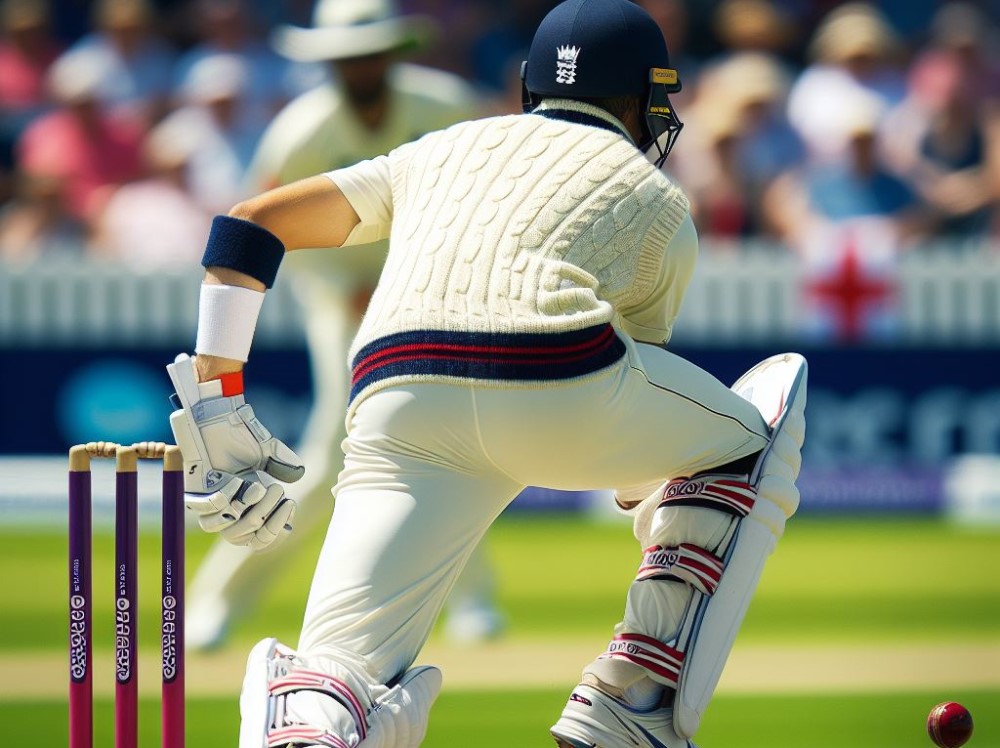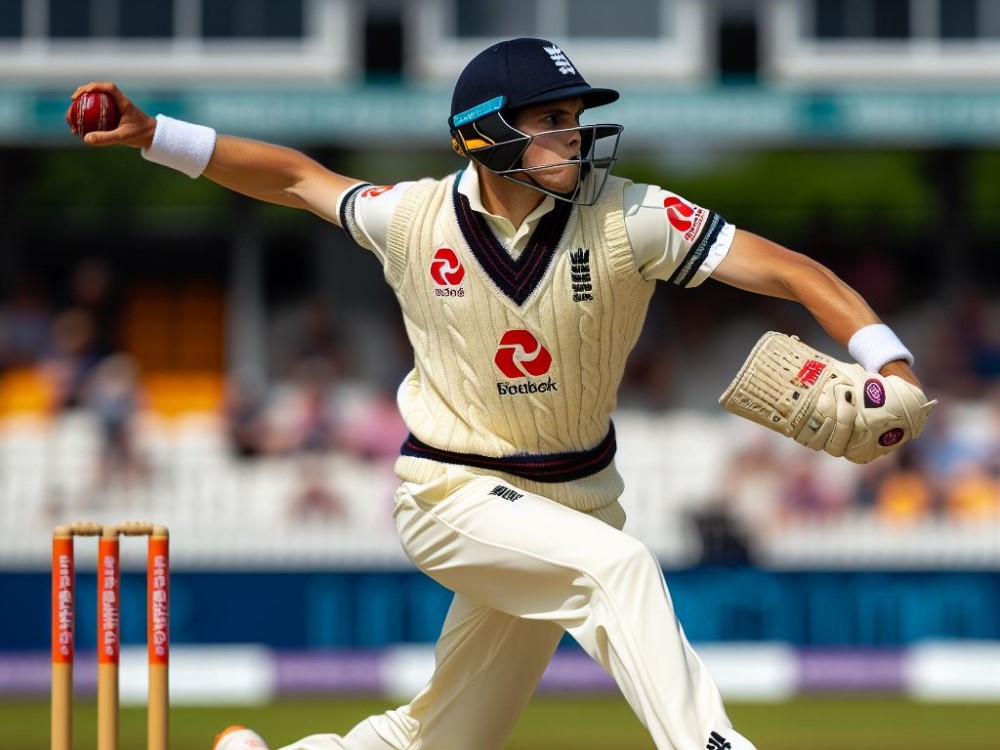
How To Adapt Bowling Techniques For T20 Cricket Vs Test Matches
Cricket is a sport that offers different formats, each with its unique set of rules, strategies, and requirements. Two prominent formats are T20 cricket and Test matches, each demanding different approaches from bowlers. Understanding the differences between T20 cricket and Test matches is crucial in adapting bowling techniques effectively.
T20 cricket is a fast-paced format characterized by limited overs, explosive batting, and aggressive gameplay. On the other hand, Test matches are played over five days, with extended playing time, and focus on building partnerships, patience, and endurance.
Adapting bowling techniques is essential for success in both formats. In T20 cricket, bowlers need to focus on speed, variation of deliveries, and strategic field placements. The key differences in bowling techniques for T20 cricket include varying the speed and type of deliveries, adjusting the length and line of deliveries based on the batsman’s weakness, and implementing specific field placements to restrict scoring opportunities.
In contrast, Test matches require bowlers to emphasize consistency, accuracy, and the ability to build pressure over long periods. Bowlers in Test matches need to maintain a steady line and length, adapt to different pitch conditions, and utilize variations in deliveries to challenge the batsman’s technique and patience. Working in partnership with fielders and captaining effectively is also crucial in Test matches.
To adapt bowling techniques for T20 cricket, bowlers should focus on developing a repertoire of deliveries, enhancing power and pace, and mastering yorkers and slower balls. For Test matches, maintaining line and length consistency, understanding pitch variations, and collaborating with fielders and captains are essential.
By understanding the differences between T20 cricket and Test matches and adapting bowling techniques accordingly, bowlers can effectively contribute to their team’s success in any format of the game.
Understanding the Differences Between T20 Cricket and Test Matches

Understanding the differences between T20 cricket and Test matches is crucial for adapting bowling techniques. What is T20 Cricket?
What is T20 Cricket?
T20 cricket, also known as Twenty20 cricket, is a shorter form of the game, consisting of twenty overs per side. What is unique about T20 cricket is its fast-paced and exciting nature, with explosive batting and aggressive bowling.
The format of T20 cricket was specifically introduced to attract a larger audience, both domestically and internationally. Over the years, T20 cricket has gained immense popularity due to its shorter duration and thrilling action.
n T20 cricket, the focus is on power-hitting, innovative shots, and quick scoring. This dynamic and entertaining style of the game requires players to adapt their skills and strategies accordingly in order to maximize their performance. T20 cricket truly provides an exhilarating experience to both players and fans alike.
What are Test Matches?
Test matches are a form of cricket that are played over five days. They are considered the pinnacle of the sport and are characterized by their longer duration and unique set of rules. In test matches, teams bat and bowl twice, with each team having two innings.
The objective is to score more runs than the opposing team while dismissing their batsmen. Test matches require players to possess exceptional skill, stamina, and mental strength due to the extended playing time and various challenges presented by the pitch and weather conditions.
They are renowned for their history, tradition, and the intense battles they often produce between cricketing nations.
If you’re interested in experiencing the purest form of cricket, watching a Test match is highly recommended. The strategic nuances and the ebb and flow of the game over five days provide a unique spectacle.
Test matches also offer great opportunities for players to showcase their skills and resilience. So, whether you’re a cricket lover or new to the sport, don’t miss the chance to witness the intensity and brilliance of a Test match.
Importance of Adapting Bowling Techniques
Adapting bowling techniques is crucial in cricket to succeed in different formats such as T20 and Test matches.
- Importance of Varying Pace: Bowlers must adjust their pace to suit the demands of the game; slower deliveries are effective in T20 while test matches require more patience.
- Importance of Change of Length: In T20, bowlers must aim for shorter lengths to restrict the batsmen, while fuller lengths are preferred in Tests to induce edges.
- Importance of Mixing Up Deliveries: Using variations like yorkers, slower balls, and bouncers strategically can deceive batsmen in both formats.
- Importance of Bowling Angles: Altering the line and angle of attack based on field placements and batsmen’s weaknesses is crucial in both T20 and Test matches.
To improve performance, bowlers should constantly work on their skills, analyze opponents’ weaknesses, and adapt their techniques accordingly for each format.
Key Differences in Bowling Techniques for T20 Cricket

In the world of cricket, the way bowlers approach T20 matches differs significantly from the techniques used in Test matches. In this section, we’ll unravel the key differences in bowling techniques for T20 cricket.
From the speed and variation of deliveries to the strategic field placements, we’ll uncover the tactics that make T20 bowling a unique and dynamic aspect of the game. So, let’s dive in and explore the exciting world of T20 bowling techniques!
1. Speed and Variation of Deliveries
The rapidity and diversity of deliveries are vital factors that distinguish T20 cricket from test matches. In the T20 format, bowlers must concentrate on hurling the ball at a tremendous pace while incorporating a multitude of changes in order to outfox the batsmen.
This entails employing slower balls, yorkers, and cutters to keep the batsmen off balance and limit their opportunities to score. Conversely, in test matches, the primary emphasis is on maintaining consistency and precision in deliveries, ensuring a proper line and length throughout extended periods of play.
Bowlers must patiently exert pressure on the batsmen and utilize various types of deliveries depending on the prevailing circumstances.
2. Length and Line of Deliveries
The length and line of deliveries play a crucial role for bowlers in cricket. It determines the effectiveness of their bowling in both T20 cricket and test matches.
3. Field Placements and Strategies
In T20 cricket, field placements and strategies are of utmost importance in preventing runs and taking wickets.
- 1. Powerplay: Fielders are strategically positioned in the inner circle to restrict scoring opportunities while maintaining a strong defense.
- 2. Fine leg and third man: These fielders play a vital role in thwarting boundary hits, thus minimizing the opponent’s score.
- 3. Deep fielders: Positioned tactically, these fielders effectively safeguard the boundaries and deter easy runs.
- 4. Mid-off and mid-on: Placed in close proximity to the batsman, these fielders act as a barrier against easy singles, forcing the opponent into difficult situations.
- 5. Slips and gully: In the fast-paced T20 format, slips and gully are often excluded to accommodate additional fielders in positions that prevent boundaries.
Fact: Were you aware that in T20 cricket, captains frequently employ unorthodox field placements to catch batsmen off guard, leading them to commit mistakes?
Key Differences in Bowling Techniques for Test Matches

When it comes to bowling techniques for Test matches, there are key differences that set them apart from other formats of cricket. In this section, we’ll uncover these distinctions and explore how they shape a bowler’s approach on the field.
From the importance of consistency and accuracy in deliveries to the art of building pressure through patience, we’ll dive into the unique aspects that make Test match bowling a true test of skill. We’ll touch upon the strategic use of different types of deliveries to keep the batsmen guessing. Get ready to uncover the nuances of Test match bowling!
1. Consistency and Accuracy of Deliveries
- Consistency and accuracy of deliveries are crucial in bowling techniques for Test matches. Here are key points to focus on:
- Delivery variation: Mix up pace, length, and line to keep batsmen guessing.
- Line and length: Maintain a consistent line and length, targeting the off-stump or just outside off-stump area.
- Building pressure: Bowl tight lines and lengths to restrict scoring opportunities and force mistakes.
- Utilize swing and seam: Adjust seam position and exploit natural swing or seam movement to trouble batsmen.
- Controlled aggression: Maintain a balance between attacking and defensive bowling, looking for breakthroughs while not leaking runs.
- Field placements: Bowl to the field set by the captain, using them strategically to create dismissals.
2. Patience and Building Pressure
In T20 cricket, patience and building pressure are key elements for bowlers to achieve success. Here are some steps to naturally incorporate these elements into your bowling techniques and excel in this format:
- Strategically mix up your deliveries with slower balls and cutters to keep the batsmen guessing and increase the pressure.
- Vary your pace effectively to disturb the timing of the batsmen and induce false shots, adding to the pressure.
- Focus on consistently bowling good lengths, precisely hitting the yorker length to restrict scoring opportunities and build pressure.
- Employ aggressive field placements to create intense pressure on the opposition and increase the chances of taking wickets.
- Maintain your composure and avoid getting frustrated while staying completely focused on executing your plans, maximizing the pressure on the batsmen.
By implementing these strategies, you can enhance your effectiveness in T20 cricket and make valuable contributions to your team’s success. Always remember, patience and building pressure are crucial aspects in this fast-paced format.
3. Utilizing Different Types of Deliveries
Different types of deliveries play a crucial role in the game of cricket. They not only allow bowlers to deceive batsmen and take wickets but also contribute to the overall strategy of the game. Whether it’s T20 cricket or Test matches, bowlers need to adapt their bowling techniques based on the format to achieve success.
In T20 cricket, bowlers focus on delivering faster and more variations to keep the batsmen guessing. These deliveries include bouncers, slower balls, yorkers, and even knuckleballs. By utilizing these different types of deliveries, bowlers aim to outsmart the batsmen and restrict their scoring opportunities.
On the other hand, in Test matches, bowlers prioritize consistency and accuracy over sheer pace. They rely heavily on deliveries like outswingers, inswingers, and cutters to create pressure on the batsmen. These deliveries are aimed at testing the batsmen’s technical skills and patience over long periods of time.
The table below showcases the key differences in utilizing different types of deliveries in these two formats:
How To Adapt Bowling Techniques for T20 Cricket

When it comes to adapting bowling techniques for T20 cricket, there are key strategies you need to master. In this section, we’ll uncover how you can enhance your bowling skills specifically for T20 matches.
From developing a diverse range of deliveries to improving power and pace, and practicing Yorkers and slower balls, we’ll reveal the secrets to dominating the fast-paced world of T20 cricket. Get ready to take your bowling game to a whole new level and leave batsmen scratching their heads.
1. Developing a Repertoire of Deliveries
- Developing a Repertoire of Deliveries: It is crucial for bowlers aiming to excel in T20 cricket to work on mastering different types of deliveries such as yorkers, slower balls, and cutters.
- Control: Practice achieving consistent line and length to put pressure on the batsmen.
- Change of pace: Develop the ability to bowl at different speeds to keep the batsmen guessing.
- Slower balls: Focus on refining your slower ball variations to deceive the batsmen.
- Mixing up lengths: Learn to bowl both fuller and shorter lengths to disrupt the batsmen’s rhythm.
By incorporating these steps into your training, you can cultivate a diverse range of deliveries that will make you a formidable bowler in T20 cricket.
2. Improving Power and Pace
Improving power and pace in bowling is crucial in T20 cricket to generate wicket-taking opportunities and restrict the opposition’s scoring.
- Strength training: Focus on enhancing power and pace by incorporating exercises like bench presses and shoulder presses to build upper body strength.
- Sprint training: Improve explosive power and bowling speed by including sprints into your training routine.
- Flexibility: Work on your flexibility to enhance your bowling action and generate more power in your deliveries.
3. Practicing Yorkers and Slower Balls
- Practicing Yorkers and Slower Balls: Enhancing your skills in T20 cricket requires a thorough understanding of practicing Yorkers and slower balls. These techniques are indispensable for bowlers aiming to deceive batsmen and secure crucial wickets. To improve these essential skills, follow these steps:
- Yorkers: Begin by targeting the base of the stumps and consistently deliver full and straight balls. By doing so, you will sharpen your accuracy and increase the effectiveness of your Yorkers.
- Slower Balls: To effectively deceive batsmen, it is crucial to develop different grips and varying release points. This enables you to alter the pace of the ball, leaving batsmen perplexed and more prone to making mistakes.
- Mastering Execution: The key to perfection lies in continuous practice and meticulous analysis. Dedicate time to consistently practicing these deliveries and thoroughly scrutinizing their effectiveness. This commitment to improvement will undoubtedly yield positive results.
- Match Simulation: It is essential to recreate realistic scenarios during practice sessions. By simulating game-like situations, you will enhance your decision-making skills when it comes to deploying Yorkers and slower balls effectively.
- Developing Variations: To keep batsmen guessing and maintain an element of surprise, it is imperative to experiment with various variations of Yorkers and slower balls. This constant exploration and innovation will ensure that you stay one step ahead of the opposition.
How To Adapt Bowling Techniques for Test Matches

Bowling in test matches requires finesse and adaptability. In this section, we’ll explore key aspects to consider when adapting your bowling techniques for this challenging format.
From maintaining line and length consistency to understanding the nuances of conditions and pitch variations, we’ll dive into the intricacies that can make a crucial difference in your performance.
We’ll discuss the importance of teamwork and communication with fielders and captains, enhancing your ability to strategize and execute your bowling plans effectively.
1. Maintaining Line and Length Consistency
Maintaining line and length consistency is of utmost importance for bowlers in both T20 cricket and test matches. It plays a vital role in ensuring that the ball consistently lands in the desired area, making it challenging for the batsman to score runs. Here are the key factors that contribute to maintaining line and length consistency in both formats:
- 1. Regular practice: Regular practice sessions aid bowlers in developing muscle memory, enabling them to consistently hit the desired areas.
- 2. Focus on technique: Proper body alignment and positioning are crucial for achieving consistent line and length.
- 3. Adaptation to pitch conditions: Understanding and adjusting line and length according to the pitch conditions are critical for achieving success.
2. Understanding the Conditions and Pitch Variations
Understanding the conditions and pitch variations is of utmost importance in cricket, be it T20 matches or test matches. In T20 cricket, the conditions and the pitch heavily favor the batsmen, thanks to the presence of shorter boundaries and flat tracks. In order to counter this, bowlers must adapt by carefully analyzing the conditions and employing a variety of techniques such as varying pace and line, utilizing slower balls, and delivering yorkers to catch the batsmen off guard.
In test matches, the conditions and pitch can vary significantly, sometimes favoring the bowlers while other times assisting the batsmen. Consequently, bowlers need to constantly assess the conditions and fine-tune their line and length accordingly. Maintaining consistency, accuracy, and patience is key for building pressure on the batsmen.
Here’s a pro-tip: It is always advisable to analyze the conditions and pitch prior to the match to strategically adapt your bowling techniques for optimal and outstanding performance.
3. Working in Partnership with Fielders and Captains
Working in partnership with fielders and captains is crucial in both T20 cricket and test matches. Here are some key factors to consider:
- Communication: Constant communication with fielders and captains is important to strategize and coordinate field placements. Working in partnership with fielders and captains ensures effective communication for successful game planning.
- Captain’s Instructions: Understand the captain’s game plan and execute accordingly, whether it’s attacking or defensive strategies. Working in partnership with fielders and captains enables better understanding and implementation of the captain’s instructions.
- Fielder Placement: Fielders play a vital role in both formats. Adjust field placements based on the opposition’s batting style and the game situation. Working in partnership with fielders and captains allows for collaborative decision-making in fielder placement.
- Rotating Bowlers: Collaborate with the captain to rotate bowlers effectively, keeping them fresh and exploiting favorable match-ups. Working in partnership with fielders and captains helps in making informed decisions regarding bowler rotation.





